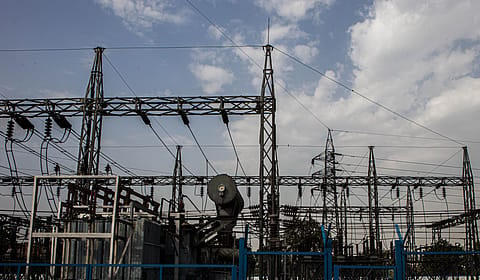Fortune India Explainer: What the proposed amendment to the Electricity Act means for consumers and companies
The Central government proposed an amendment to the Electricity Act, 2003, on October 9 with a focus on financial viability, ease of doing business, and clean energy.

In what could be the next major reform to overhaul India’s power generation and distribution system, the Central government proposed an amendment to the Electricity Act, 2003, on October 9. While critics view the proposal as a step towards large-scale privatisation, the government states that the changes to the law will result in the creation of a power sector that is financially resilient, environmentally sustainable, and capable of supporting globally competitive industries.
Let us see what the salient features of the proposed amendment are and how it intends to address the problems plaguing the sector, and why some people are complaining about the proposed changes.
Why the amendment?
Despite several structural reforms such as unbundling of utilities, competition, and open access in the past, the government has not been able to end the financial mess the power distribution segment is in. The cumulative losses are estimated to exceed ₹6.9 lakh crore today. Regulatory delays have further weakened the sector’s financial viability, and cross-subsidy-induced high industrial tariffs have impacted industrial competitiveness and constrained economic growth. Changes in the Electricity Act, 2003, are also required to provide legal teeth to mandate the shift towards clean energy, the establishment of battery storage systems, etc. The government says the proposed amendments seek to ensure the financial sustainability of the power sector and promote ease of doing business and ease of living. They also aim to enhance industrial competitiveness, increase the share of non-fossil electricity generation, and strengthen regulatory accountability.
What are the key amendments?
Financial viability: This amendment will make it mandatory for electricity regulatory commissions to determine cost-reflective tariffs in line with the Supreme Court’s judgment (BSES Rajdhani Power Ltd & Anr. vs Union of India & Ors., 2025) that held that electricity tariffs must be cost-reflective to ensure the financial viability of the power sector. Further, to prevent delays in tariff revisions, which often arise due to the late filing of tariff petitions by utilities, the changes will empower the state electricity regulatory commissions to determine tariffs on their own. This will ensure that revised tariffs are implemented from April 1 of each financial year, improving the overall financial discipline in the power sector.
Ease of doing business: Currently, distribution licensees are bound by a Universal Service Obligation (USO) to supply electricity to all consumers, including those eligible for open access (i.e., above 1 MW). As electricity demand rises, loss-making distribution companies are compelled to procure additional, often costlier power, which increases fixed costs and pushes up tariffs for other consumers. High cross-subsidies and surcharges further inflate industrial tariffs, reducing the competitiveness of Indian manufacturing and constraining MSME growth.
To address these challenges, it has been proposed that the state commissions, in consultation with state governments, may exempt distribution licensees from the USO for consumers eligible for open access. To ensure an uninterrupted supply, state electricity regulatory commissions may designate one of the distribution licensees to supply power at a premium over the cost of supply if other supply arrangements fail. This reform is expected to unlock substantial electricity demand from industries that can access affordable power directly. By reducing tariff distortions and supporting industrial expansion, it will drive job creation and accelerate India’s progress toward energy-led economic growth, the government says.
The changes will also see manufacturing enterprises, railways, and metro railways being exempted from cross-subsidy within five years to help lower transport and logistics costs, improve efficiency, and enhance India’s competitiveness in global markets.
Recommended Stories
Clean energy push: The amendment will empower the Central Electricity Regulatory Commission (CERC) to introduce market-driven instruments that attract investment, encourage competition, and ensure faster and more efficient renewable capacity addition. It will allow the Central government to set enforceable non-fossil energy consumption obligations similar to what exists in the Energy Conservation Act, 2001. It also introduces the definition of energy storage systems, making it part of ‘power systems’ to facilitate complete utilisation of variable renewable energy from solar and wind sources by storing surplus energy for use during periods of low generation. This is expected to significantly enhance grid stability by balancing supply and demand, reduce peak deficits through peak shifting, and support essential ancillary services. Additionally, it will also allow utilities to optimise operations by capitalising on price fluctuations in the electricity market, leading to lower electricity costs, reduced carbon emissions, and play a crucial role in meeting energy transition goals.
What critics say?
The primary criticism against the proposed amendments is from the electricity employees affiliated to the Electricity Employees Federation of India. They say that the amendment proposal is proof that the government has not learned its lessons despite the failure of all the earlier attempts at privatisation and liberalisation, such as unbundling of utilities, competition, and open access. They allege that the amendments are designed to pave the way for large-scale privatisation, commercialisation, and centralisation of the Indian power system. It threatens the financial sustainability of public utilities, the democratic rights of consumers, the federal structure of the Indian state, and the livelihood of lakhs of power sector workers across the country, they say.
Will the amendment result in higher tariffs?
Since the draft amendment Bill has made a case for phasing out cross-subsidy largely for industrial consumers, who pay inflated tariffs to subsidise residential or agri users, tariffs could see a correction. Residential users could see a rise in tariffs depending on how soon the cross-subsidy phaseout is implemented. However, since power is a concurrent subject, that is, both the Centre (through Parliament) and state legislatures (through electricity regulatory commissions) can make laws, the impact on tariffs could vary across states.
What does it mean for discoms?
The cumulative debt of distribution companies has increased steadily from ₹5.76 lakh crore (FY21) to ₹7.53 lakh crore (FY24), according to the ministry of power’s annual report for FY25, indicating persistent financial stress. Though the average cost of supply-average revenue realised (ACS-ARR) gap has narrowed from 63 paise to 21 paise per unit, the utilities are still losing thousands of crores in annual under-recovery, resulting in higher losses. Against this backdrop, the 2025 amendment Bill makes a case for “cost-reflective” tariffs.
